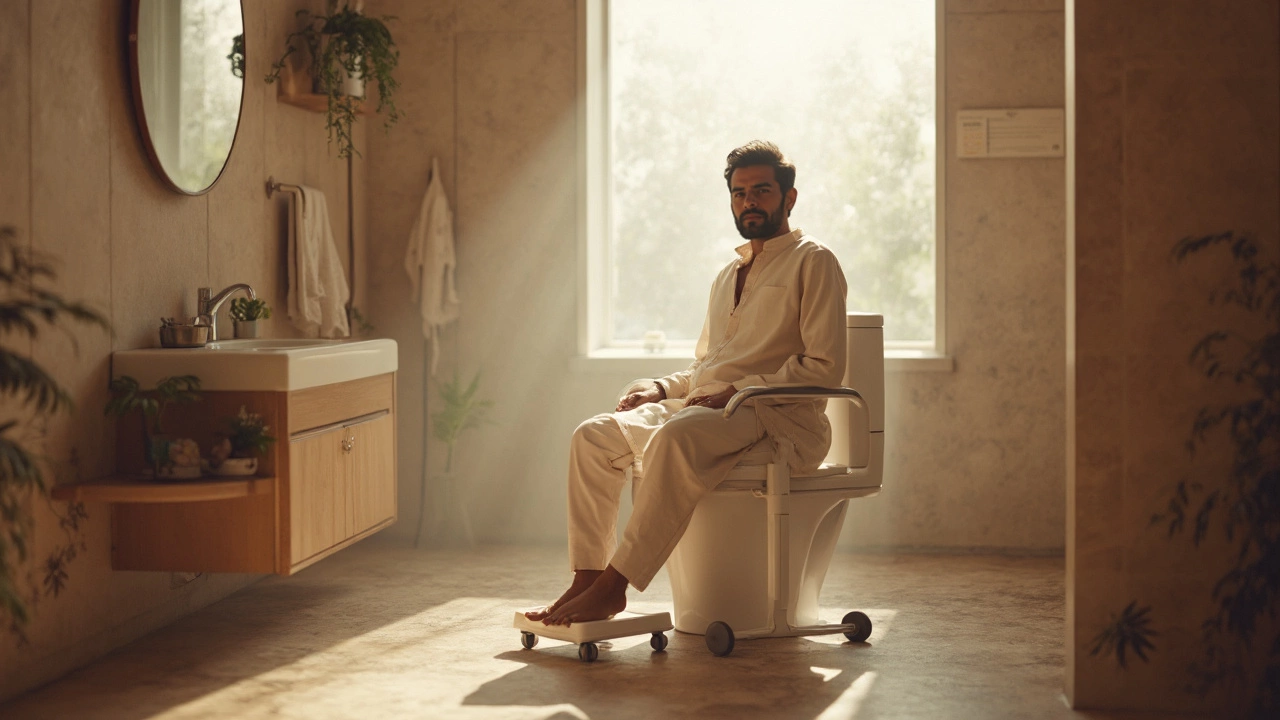Toilet After Knee Surgery: What You Need to Know for Safe Recovery
When you’re recovering from knee replacement surgery, a common procedure to relieve pain and restore mobility in damaged knees. Also known as total knee arthroplasty, it’s one of the most successful orthopedic surgeries—but the real challenge often starts after you leave the hospital. One of the most overlooked but critical parts of recovery? Using the toilet safely. It sounds simple, but bending, standing, and balancing after surgery can turn a basic bathroom trip into a risky event. Many patients don’t realize how much their bathroom setup affects healing—and how easy it is to make it safer.
What makes the toilet a problem? After knee surgery, your range of motion is limited. You can’t bend your knee past 90 degrees easily, and your muscles are weak. Sitting down or standing up from a standard toilet (which is usually 15 to 17 inches high) forces your knee into an awkward angle, increasing pain and risk of falls. That’s why toilet height, the distance from the floor to the top of the toilet seat. Many experts recommend raised toilet seats or toilet risers that add 3 to 6 inches of height. A higher seat means less bending, less strain, and more control. You don’t need a fancy system—just a simple, sturdy riser or a temporary seat with arms. Add grab bars on both sides of the toilet, and you’ve cut your fall risk in half. Studies show patients who use these tools go home sooner and have fewer complications.
It’s not just about the seat. What you do before, during, and after using the toilet matters too. Keep your bathroom clear of rugs, cords, or wet spots. Use a shower chair if you’re bathing. Have your walker or cane within arm’s reach. Don’t rush. Many people try to do too much too soon—and end up back in the ER. Recovery isn’t about speed. It’s about safety. Even small changes like installing a non-slip mat or using a long-handled reacher to pick up dropped items make a big difference. And don’t ignore your posture. Keep your back straight, avoid twisting, and use your arms to push up—not your knee.
Most of the posts below come from real patients and caregivers who’ve walked this path. You’ll find practical checklists for bathroom setups, stories from people who learned the hard way, and advice on what to buy (and what to skip). Whether you’re preparing for surgery or helping someone recover, these guides give you the no-nonsense details you won’t get from a doctor’s 10-minute visit. This isn’t theory. It’s what works.
Navigating Toilet Use After Knee Surgery: Essential Tips
Recovering from knee surgery requires attention to everyday activities, including using the toilet. Safety and comfort can be challenging without proper support and tools. This article delves into the tricks of navigating bathroom visits post-surgery, from helpful aids to maintaining balance. It's all about making this phase of recovery as smooth and comfortable as possible.
read more
